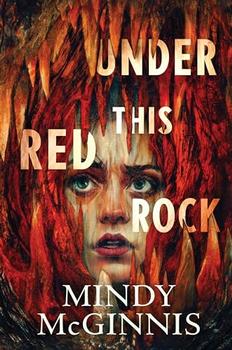Summary | Excerpt | Reviews | Beyond the book | Read-Alikes | Genres & Themes | Author Bio

However the world will end, Ellis Kimball is ready for it. Her obsessive stash of survivalist essentials and general anxiety worry her family and her therapist, but she is determined to be prepared for every eventuality her overactive imagination can dream up—except the one that actually happens in Let's Call It a Doomsday.
Meanwhile, Ellis' new friend Hannah claims to know the date, the place and even the form the ultimate disaster heralding the end of the world will take. As the two unlikely friends with a shared obsession count down the final months, however, they discover more and more reasons to want to postpone The End.
Three elements help Let's Call It a Doomsday stand out among other recent young adult releases about mental illness: Ellis's survivalist knowledge, her Mormon religion and the author's detailed depiction of the Oakland, California setting. Ellis is just as obsessed with surviving the apocalypse as she is with its impending arrival. Cleverly accessing Amazon under her parents' radar, she uses every penny she can scrounge to order specialized survivalist gear like warm, lightweight silver space blankets. Her bedroom looks like a Bear Grylls wilderness camp's storeroom. Because the apocalypse just might happen when she is away from home, Ellis also carries a small emergency pack disguised as an Altoids tin everywhere she goes (including school, and there are some items in that kit that would definitely alarm her principal!). When her mother challenges her obsession, Ellis reminds her that preparedness is ingrained in their faith.
Ellis has grown up in a close-knit Mormon congregation. Until she falls in with Hannah and her somewhat disreputable circle, all her friends have been fellow Mormons. This being Oakland, Hannah's crew is diverse: Lia is Filipina, and not-quite-but-almost Mormon Tal is half-Hispanic and bisexual. Ellis finds herself questioning her religion's sexual doctrines, but not her faith itself, as she begins to realize that she is attracted to both Lia and Tal. The book's treatment of Mormonism walks a fine line between tolerance and criticism. Ellis finds strength in church services and fellowship, even inviting emotionally needy Hannah to one Sunday event. Despite Mormonism's disapproval of his bisexuality, Tal also remains drawn to the strength he finds in church services, and the sense of community. On the other hand, there is a sanctimonious edge to some characters: Ellis's mother and her circle of church ladies are mortified that a young woman brought up in the Church would be seen hanging around a park with a reputation for drug use, and they disapprove of Hannah and the others.
Ellis has always loved her home near the San Francisco Bay; she savors its colorful sights, its smells and tastes, its quirkiness and its characters, and her love is tangible in her descriptions. But with her somewhat sheltered childhood, she has not explored all of its corners, such as trendy restaurants that also help the hungry homeless, or parks that attract the city's neediest. Because Hannah's youth has been very different from Ellis's and her obsession takes a different form, an ongoing search for her mentally ill and homeless brother Daniel, these are places she does know. When the girls are walking up and down San Francisco's steep streets, the reader's legs actually begin to ache.
The book's conclusion is both satisfying and open-ended, if a bit too neat. The minor apocalypse that envelops the Bay Area occurs as Hannah predicted, while illustrating how an obsessive, pinpoint perspective can skew interpretation. Unanswered questions remain. But this is the way it is after the end of the world as we know it: a world we do not know begins.
![]() This review was originally published in The BookBrowse Review in September 2019, and has been updated for the
September 2020 edition.
Click here to go to this issue.
This review was originally published in The BookBrowse Review in September 2019, and has been updated for the
September 2020 edition.
Click here to go to this issue.

If you liked Let's Call It a Doomsday, try these:

by Mindy McGinnis
Published 2025
From award-winning author Mindy McGinnis comes a mesmerizing YA psychological mystery following a teen girl who is grappling with the death of her brother as she starts a new job in the caverns of Ohio—only to become the number one suspect in her coworker's murder. Perfect for fans of Courtney Summers and Kathleen Glasgow.

by Jeff Garvin
Published 2021
A quirky and heartfelt coming-of-age story about a teen girl with bipolar II who signs her failed magician father up to perform his legendary but failed illusion on live TV in order to make enough money to pay for the medications they need - from the author of Symptoms of Being Human. Perfect for fans of Adi Alsaid, David Arnold, and Arvin Ahmadi.
Your guide toexceptional books
BookBrowse seeks out and recommends the best in contemporary fiction and nonfiction—books that not only engage and entertain but also deepen our understanding of ourselves and the world around us.